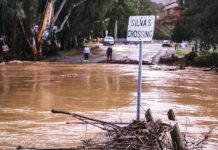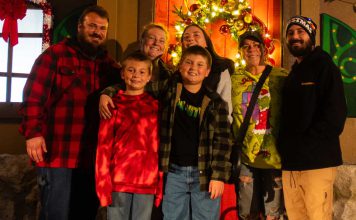Mechanical failure may be ruled out by January, but final
results could take a year
Gilroy – A plane crash that killed four family members from Fresno after slamming into a hillside in Coyote Lake Park is under investigation by the National Transportation Safety Board, but final results may not be available for a year. However, mechanical failure may be ruled out as early as the end of January, NTSB officials said.
The remains of pilot Matthew Armstrong, 41, his wife Sara Armstrong, 37, the son they were in the process of adopting – 4-year-old Cody Duncan – and their niece Kacie Kusalich, 11, were recovered Dec. 22. Their remains are expected to be released to family members today.
The four were traveling back to Fresno from South County Airport in San Martin Dec. 21. The single-engine, 1956 Cessna 172 had recently been purchased by Armstrong from a friend and NTSB officials are uncertain when the plane was last inspected.
According to NTSB air safety investigator Nicole Charnon, although the plane is an older model, if maintained properly, the plane would have been very reliable.
“We had reports that the weather was pretty bad and that visual flight rules would not be recommended,” she said. “The pilot was a private pilot. He was not instrument rated. The weather brief reported that he did not recommend flying under (visual flight rules).”
Armstrong received his private pilot’s license about one month ago, but was not licensed to fly using instruments alone.
The aircraft is in Sacramento where investigators examine it beginning next month to determine if everything was working properly.
Charnon is gathering information about the weather report Armstrong received from the Oakland Flight Service and transcripts from air traffic control.
Witnesses reported the plane circling overhead for about 10 to 15 minutes and heard sounds as if the pilot was gunning the engine.
“It’s not uncommon for us to hear that,” Charnon explained. “Sometimes if it’s spinning it will sound like it’s revving up and down.”
The exact time Armstrong took off is unknown, but he sent a distress signal about 8:30pm. He lost contact with air traffic control at 2,500 feet, Federal Aviation Administration officials said.
The investigation will determine whether or not Armstrong violated FAA rules for flying under instrument meteorological conditions (IMC) without certification.
“If we do find that a regulation was busted, the pilot paid the ultimate price,” Charnon said. “But that hasn’t been determined yet.”
According to the Aircraft Owners and Pilots Association Air Safety Foundation’s 2004 Nall report, about 76 percent of fatal general aviation accidents are pilot-related.
More than 70 percent of weather-related accidents resulted in fatalities in 2003 – and 87.5 percent occurred when pilots flying under visual flight rules (VFR) were in instrument meteorological conditions.
Dr. Joseph D. McMurray, an oral surgeon in Gilroy, has been flying for the past four years. He is instrument rated, and flies using instruments even when the skies are clear.
“It’s not general aviation that is dangerous. But when it comes right down to it – it’s risk management.”
McMurray is familiar with Cessna 172s and believes Armstrong should not have taken off in the first place.
“It is a bullet proof engine, that’s what we all learn on. Parts don’t come out of the sky with that. It’s like a Chevy in the sky. It’s solid,” he said. “Most pilots feel that if you’re going to fly in that area at night, it’s best to fly under instruments. This time of year the weather changes and because of the surrounding hills it can become socked in and feels like a soup bowl. … It’s unfortunate that situations like with Mr. Armstrong where his experience, his level of proficiency, and his need to get home all weighed against him. We pilots need to hold ourselves to higher standards. We have precious cargo on board.”
Family members believe Armstrong was returning to San Martin when it went down.
“The plane was only about 150 feet from the top of the mountain. I think they were turning around to come back,” Sara’s mother Helen Espy said. “I feel like they got up there, thought, ‘Nah, we don’t want to chance it.”
The family did not want to speculate about the cause of the crash.
“It was an accident, a very tragic accident,” Espy said.













